Audio Mixer Overview
Introduction
The audio mixer, sometimes called “the console” or “sound desk”, is an essential electronic device which can control the levels multiple audio signals. The main purpose is the balance of volume levels and tonality but, may include any variety of features.
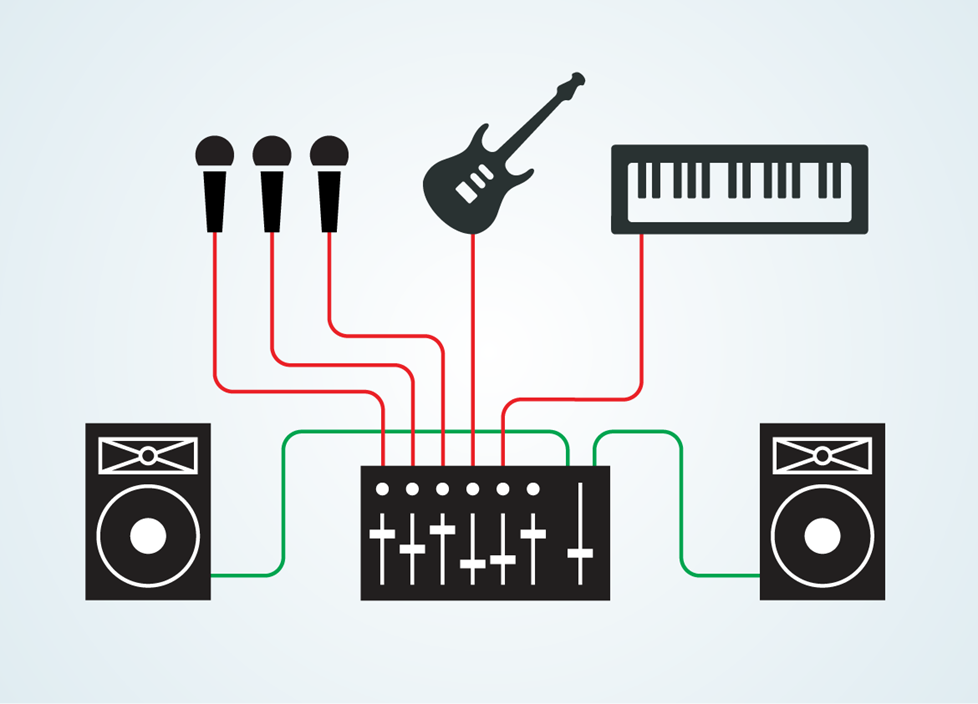
Analog vs Digital Mixers
The main difference between analog and digital mixers is the use of a computer to control audio signals. The principals are the same. Digital mixers are extremely flexible with multi-purpose controls whereas analog knobs and faders are specific to what they are hardwired to do.
Analog mixers are great for learning because we can always distinguish what we are looking at. We will use them for most examples in this lesson.

Breakdown
Universal
Many of the functions found on mixers are “universal”, meaning they are likely to be found on any mixer
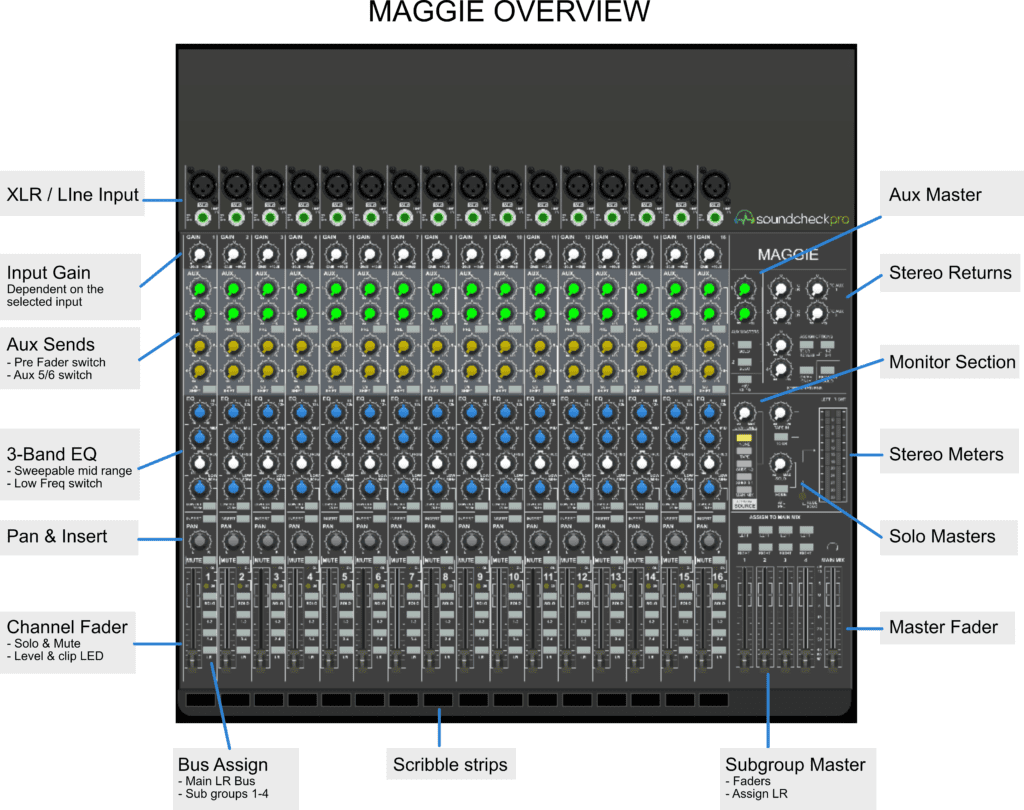
- Inputs – Where signals are fed into the mixer channels. XLR or Line.
- Input Gain – Controls the level of signal entering the mixer.
- Channel Volume– Controls the level of signal leaving a channel strip. Usually a fader.
- Solo/Mute – Isolate or remove a channel feeding the output.
- Master Volume – Controls the level of the total output of the mixer.
- Pan – Balance the stereo LR output of a channel.
- Aux Sends & Returns – Used for FX or headphone mixes.

More Features
Other features should be expected to be found on mixers with more functionality:
- Inserts – Add external audio processors into the channel strip signal path.
- EQ – Attenuate the frequencies of a channel
- Subgroups – Group channels together. Great for drums.
- Compression –
- Pre and Post fader controls – Sends and groups can be assigned using the channel signal before or after the fader volume.

System Block Diagram
The system is shown in Figure 1, which contains three input signals, preamplifier, summing amplifier,
equalizer and a speaker.
- The three signal sources, which are three channels, provide signals to the system. The source can be from any electronic devices, such as cell phones and computers. The microphone is used to convert acoustic signal to electric signals.
- The preamplifier is only implemented to the microphone source because other audio signals, like those from cell phones or computers, have already been pre-amplified before come into the circuit, while the signal from microphone are not amplified yet.
- The summing amplifier is utilized to combine the three channels and control volumes of each channel. For example, if source 1 is expected to be boosted and source 2 is to be attenuated, the summing amplifier is the circuit to perform this function.
- The equalizer is the core to boost or attenuate signals in a range of frequencies.
- The speaker is the device to covert electric analog signal to acoustic signals.


Input Connections on a Mixer
There are a few different types of inputs on audio mixers:
- XLR inputs – Great for connecting XLR Microphones & XLR Cable
- Line inputs – Good for line-level inputs (phones, computers, keyboards, etc.)
Channelstrips
Refers to one channel of an audio mixing. Most mixers lay out channels in columns from left to right with the functions of each channel stacked from top to bottom. This column is sometimes called the “strip”.
Channelstrips will contain any combination of features. The order of features can vary mixer to mixer.


Input Section
Mixers can offer any variety of features. A full-featured input section will be equipped to handle any signal type whether Mic or Line level with additional controls.
- Mic/Line Input Level – Controls the level of signal coming into the channel
- Mic/Line Switch – Determines which input connection is actively feeding the channel
- Flip – For in-line mixers offering two sets of faders
- Pad – A fixed gain reduction of the incoming signal.
- Phase – Reverses the polarity of
- Phantom Power – Required for certain microphones to operate properly.

Equalizer
Channelstrips that offer an EQ that adjust the tonality of a signal. The controls will vary from mixer to mixer. The full feature EQ will offer the following parameters for each EQ band.

Aux & Cue Sends
Auxiliary sends are used to add audio effects and headphone mixes.

Master Section
The master section of a mixing board is where you can find the grouped controls such as groups, master gains, master fader controlling the volume sent to the speakers.
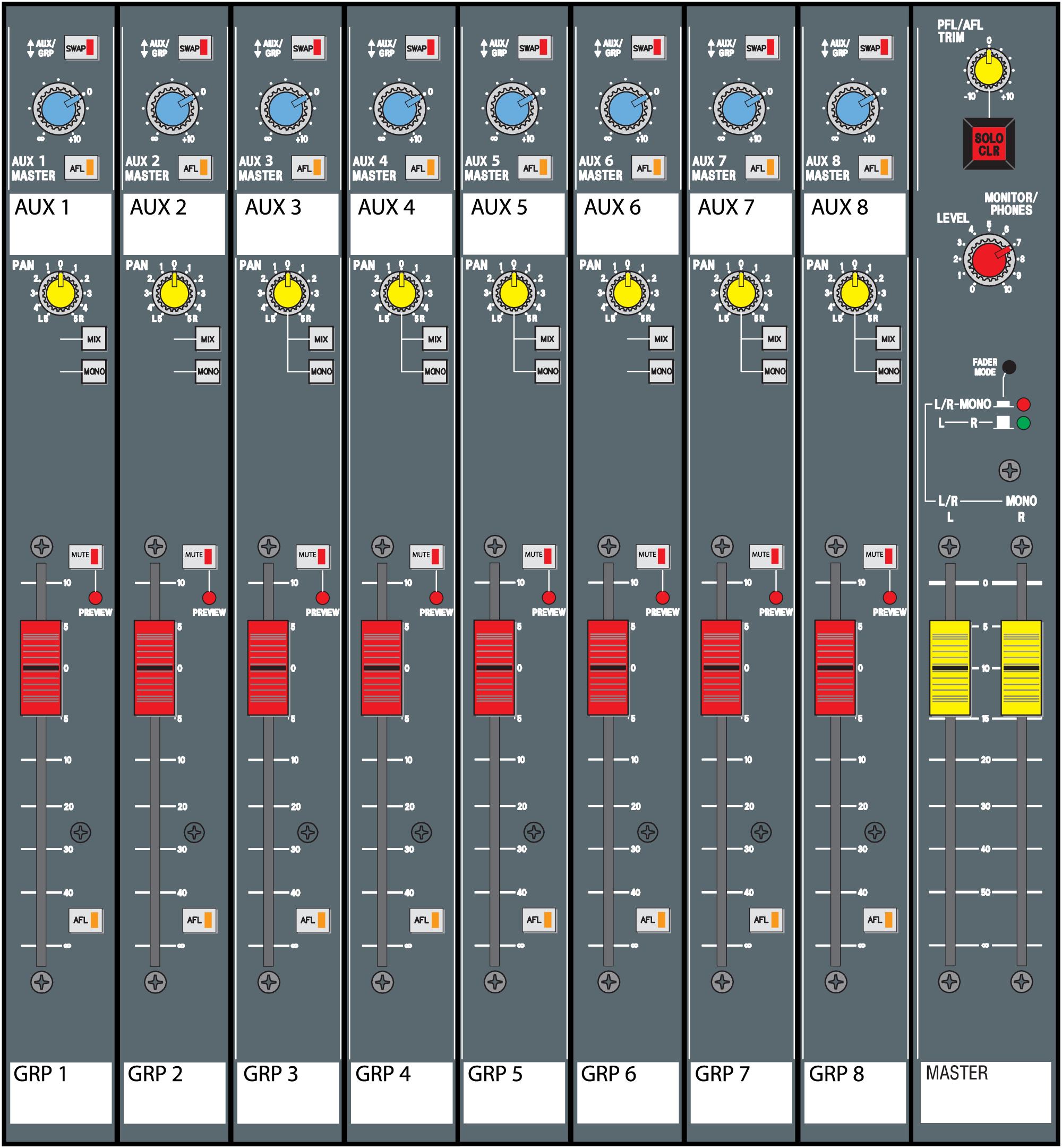
Aux Send & Return Masters
Auxiliary sends are used for adding effects like reverb or delay. They can also be used for headphone mixes. The channels strips send aux signals to their output. For headphone mixes this is a one way trip. For adding effects the signals from the processing are routed back into the mixer at the returns.
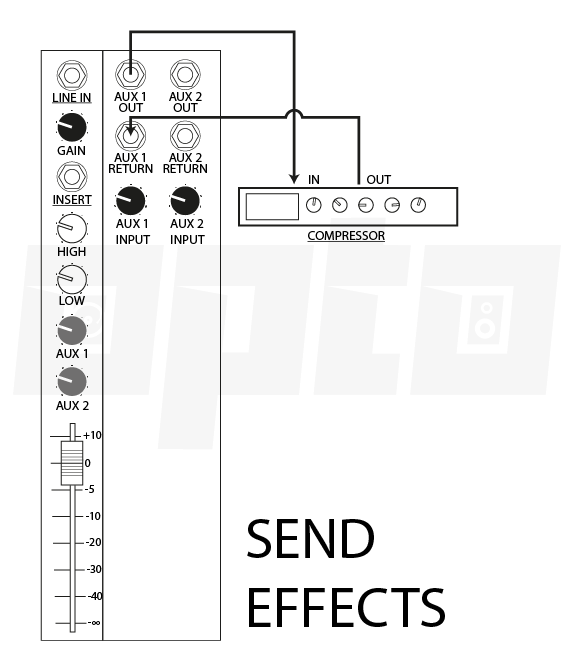
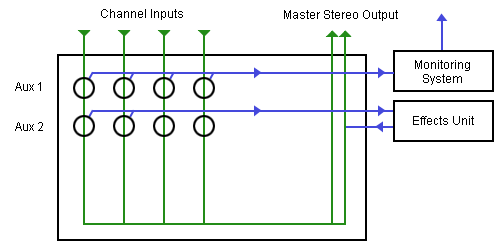
Channel Fader Section
The channel fader controls the volume of signal exiting a channel. Here you can find the common controls for gain, solo, mute and bus routing.
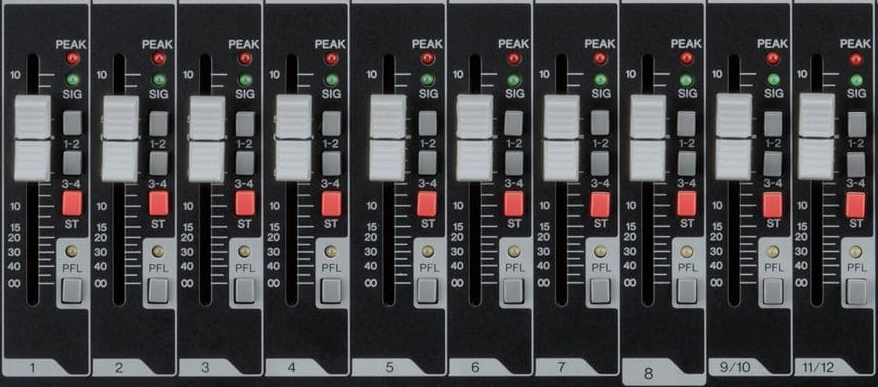
Subgroups & Bus Masters
Channels can be grouped together so that the overall level of grouped signals can be controlled by a single fader. This is great for grouping drum mics. After fine tuning the input levels of the snare,hithat mics, the subgroup is an added gain stage that can be used to balance all drum signals feeding the master.
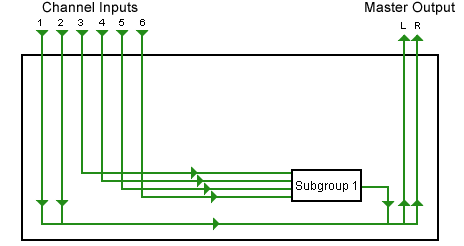
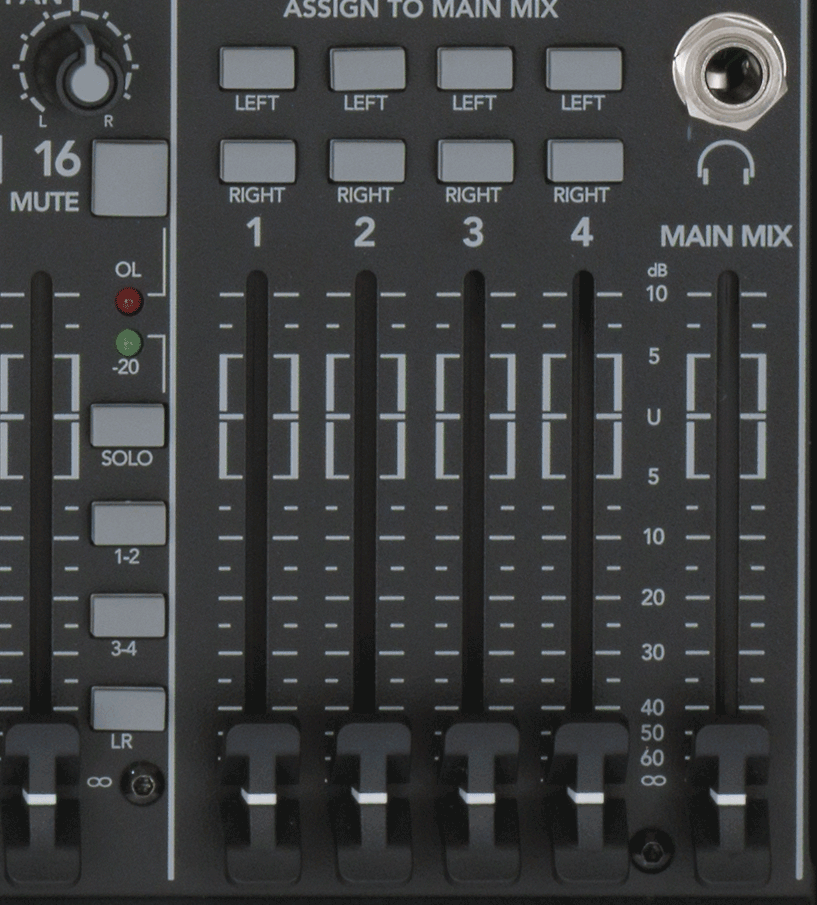
Monitor Section
The monitor section controls what is being heard through the main speakers.


